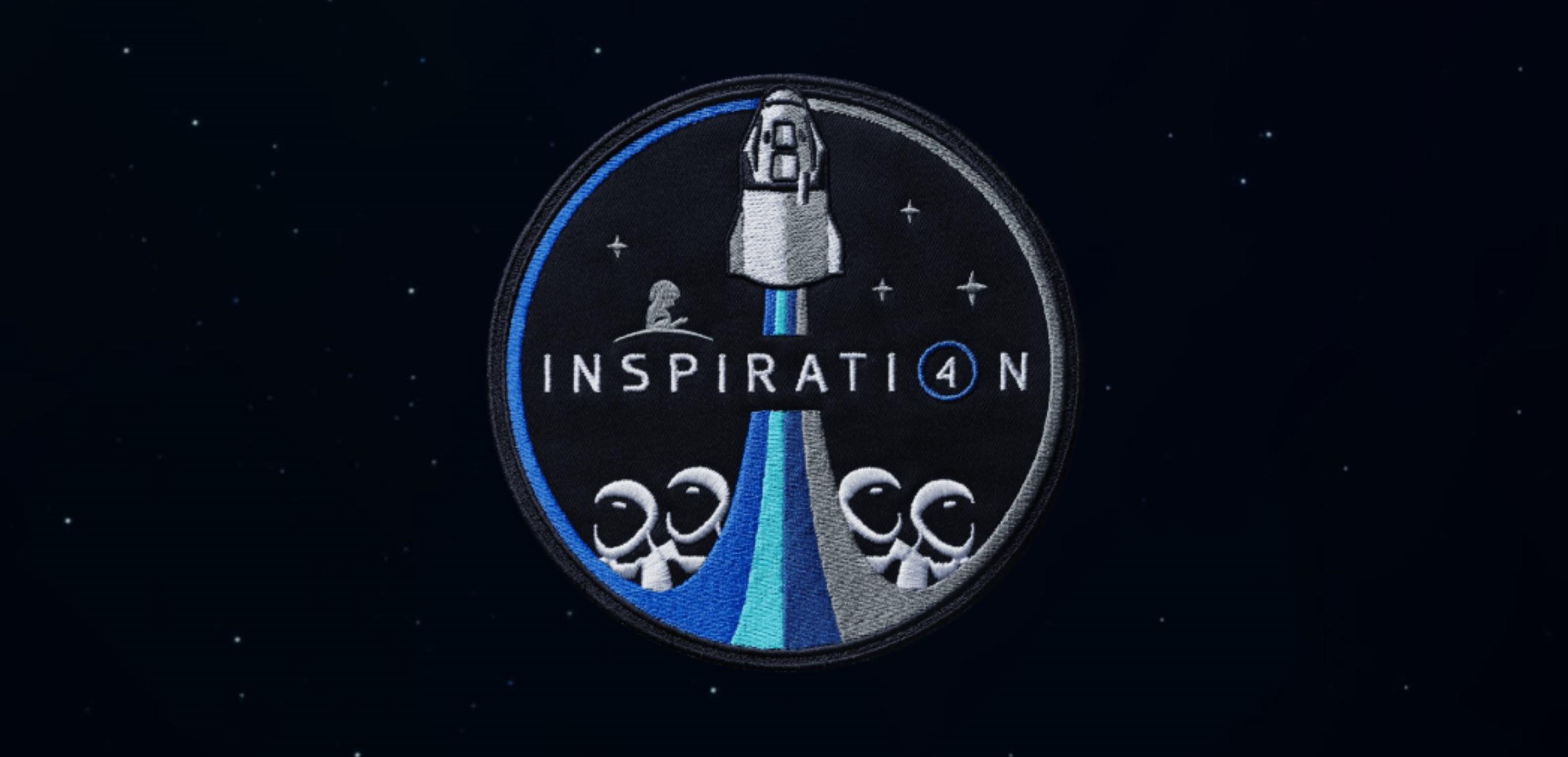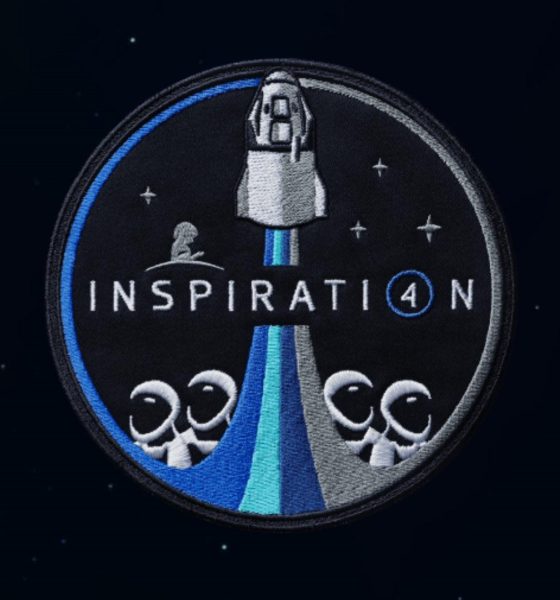

News
Orbit for all: SpaceX, Shift4 reveal private Crew Dragon launch and ticket raffle
SpaceX and financial company Shift4 have announced what could become the world’s first private orbital astronaut launch – and two of Crew Dragon’s four seats are up for grabs in a public raffle for charity.
Spearheaded by US billionaire and Shift4 founder/CEO Jared Isaacman, the venture has been deemed Inspiration4 and is closely linked with the St. Jude Children’s Research Hospital and charity. On top of his purchase of a private SpaceX ride to orbit, Isaacman has committed to donate no less than $100 million to the medical non-profit and hopes to raise another ~$200 million by using the extraordinary venture to grab public attention.
Most notably, two of Inspiration4’s four available seats will be raffled at random – one to an individual who donates to St. Jude and the other to someone who starts an online store through Shift4Shop’s (formerly 3dcart) e-commerce platform. In other words, Inspiration4 represents the first time that almost any US resident (and possibly even a non-citizen, according to Elon Musk) has a real opportunity to launch into orbit.

This is the second private Crew Dragon launch firmly announced in recent months. In 2020, Axiom Space revealed that it had purchased a Crew Dragon and Falcon 9 launch to send the world’s first fully private mission to the International Space Station (ISS). Axiom announced the full crew manifest mere days ago and confirmed that the launch had slipped slightly from November or December 2021 to no earlier than (NET) January 2022.
Inspiration4 says it is currently aiming to launch NET Q4 2021, a target that – if kept – would make the venture the world’s first private orbital astronaut launch. Onboard will be Jared Isaacman himself, “a St. Jude ambassador with direct ties to the mission who exemplifies the pillar of Hope as well as the courageous vision upon which St. Jude was founded,” and two semi-random members of the public.
Unlike Axiom’s first contracted launch, Inspiration4 will be a free-flyer mission, meaning that Crew Dragon will serve as its own tiny space station for a reported “2-4 days” before reentering and returning its private astronaut crew back to Earth. This is the second free-flyer Crew Dragon mission announced after Space Adventures revealed an effort to book wealthy passengers to “break the world altitude record for private citizen spaceflight” in February 2020.
Inspiration4 is the fourth serious effort announced to launch private astronauts on a SpaceX Crew Dragon in the last 12 months and is unlikely to be the last. According to Isaacman, SpaceX’s medical screening attitude is focused on how to get someone into orbit, rather than how to ground someone from orbital spaceflight, significantly improving the odds that the ticket raffle will truly be random and that just about anyone will be able to launch on Crew Dragon (and, eventually, Starship) in years to come.

News
Elon Musk’s Grokipedia surges to 5.6M articles, almost 79% of English Wikipedia
The explosive growth marks a major milestone for the AI-powered online encyclopedia, which was launched by Elon Musk’s xAI just months ago.

Elon Musk’s Grokipedia has grown to an impressive 5,615,201 articles as of today, closing in on 79% of the English Wikipedia’s current total of 7,119,376 articles.
The explosive growth marks a major milestone for the AI-powered online encyclopedia, which was launched by Elon Musk’s xAI just months ago. Needless to say, it would only be a matter of time before Grokipedia exceeds English Wikipedia in sheer volume.
Grokipedia’s rapid growth
xAI’s vision for Grokipedia emphasizes neutrality, while Grok’s reasoning capabilities allow for fast drafting and fact-checking. When Elon Musk announced the initiative in late September 2025, he noted that Grokipedia would be an improvement to Wikipedia because it would be designed to avoid bias.
At the time, Musk noted that Grokipedia “is a necessary step towards the xAI goal of understanding the Universe.”
Grokipedia was launched in late October, and while xAI was careful to list it only as Version 0.1 at the time, the online encyclopedia immediately earned praise. Wikipedia co-founder Larry Sanger highlighted the project’s innovative approach, noting how it leverages AI to fill knowledge gaps and enable rapid updates. Netizens also observed how Grokipedia tends to present articles in a more objective manner compared to Wikipedia, which is edited by humans.
Elon Musk’s ambitious plans
With 5,615,201 total articles, Grokipedia has now grown to almost 79% of English Wikipedia’s article base. This is incredibly quick, though Grokipedia remains text-only for now. xAI, for its part, has now updated the online encyclopedia’s iteration to v0.2.
Elon Musk has shared bold ideas for Grokipedia, including sending a record of the entire knowledge base to space as part of xAI’s mission to preserve and expand human understanding. At some point, Musk stated that Grokipedia will be renamed to Encyclopedia Galactica, and it will be sent to the cosmos.
“When Grokipedia is good enough (long way to go), we will change the name to Encyclopedia Galactica. It will be an open source distillation of all knowledge, including audio, images and video. Join xAI to help build the sci-fi version of the Library of Alexandria!” Musk wrote, adding in a later post that “Copies will be etched in stone and sent to the Moon, Mars and beyond. This time, it will not be lost.”
News
Tesla Model 3 becomes Netherlands’ best-selling used EV in 2025
More than one in ten second-hand electric cars sold in the country last year was a Tesla Model 3.

The Tesla Model 3 became the most popular used electric car in the Netherlands in 2025, cementing its dominance well beyond the country’s new-car market.
After years at the top of Dutch EV sales charts, the Model 3 now leads the country’s second-hand EV market by a wide margin, as record used-car purchases pushed electric vehicles further into the mainstream.
Model 3 takes a commanding lead
The Netherlands recorded more than 2.1 million used car sales last year, the highest level on record. Of those, roughly 4.8%, or about 102,000 vehicles, were electric. Within that growing segment, the Tesla Model 3 stood far ahead of its competitors.
In 2025 alone, 11,338 used Model 3s changed hands, giving the car an 11.1% share of the country’s entire used EV market. That means more than one in ten second-hand electric cars sold in the country last year was a Tesla Model 3, Auto Week Netherlands reported. The scale of its lead is striking: the gap between the Model 3 and the second-place finisher, the Volkswagen ID3, is more than 6,700 vehicles.
Rivals trail as residual values shape rankings
The Volkswagen ID.3 ranked a distant second, with 4,595 used units sold and a 4.5% market share. Close behind was the Audi e-tron, which placed third with 4,236 registrations. As noted by Auto Week Netherlands, relatively low residual values likely boosted the e-tron’s appeal in the used market, despite its higher original price.
Other strong performers included the Kia Niro, the Tesla Model Y, and the Hyundai Kona, highlighting continued demand for compact and midsize electric vehicles with proven range and reliability. No other model, however, came close to matching the Model 3’s scale or market presence.
News
Tesla Model Y Standard Long Range RWD launches in Europe
The update was announced by Tesla Europe & Middle East in a post on its official social media account on X.

Tesla has expanded the Model Y lineup in Europe with the introduction of the Standard Long Range RWD variant, which offers an impressive 657 km of WLTP range.
The update was announced by Tesla Europe & Middle East in a post on its official social media account on X.
Model Y Standard Long Range RWD Details
Tesla Europe & Middle East highlighted some of the Model Y Standard Long Range RWD’s most notable specs, from its 657 km of WLTP range to its 2,118 liters of cargo volume. More importantly, Tesla also noted that the newly released variant only consumes 12.7 kWh per 100 km, making it the most efficient Model Y to date.
The Model Y Standard provides a lower entry point for consumers who wish to enter the Tesla ecosystem at the lowest possible price. While the Model 3 Standard is still more affordable, some consumers might prefer the Model Y Standard due to its larger size and crossover form factor. The fact that the Model Y Standard is equipped with Tesla’s AI4 computer also makes it ready for FSD’s eventual rollout to the region.
Top Gear’s Model Y Standard review
Top Gear‘s recent review of the Tesla Model Y Standard highlighted some of the vehicle’s most notable features, such as its impressive real-world range, stellar infotainment system, and spacious interior. As per the publication, the Model Y Standard still retains a lot of what makes Tesla’s vehicles well-rounded, even if it’s been equipped with a simplified interior.
Top Gear compared the Model Y Standard to its rivals in the same segment. “The introduction of the Standard trim brings the Model Y in line with the entry price of most of its closest competition. In fact, it’s actually cheaper than a Peugeot e-3008 and costs £5k less than an entry-level Audi Q4 e-tron. It also makes the Ford Mustang Mach-E look a little short with its higher entry price and worse range,” the publication wrote.








